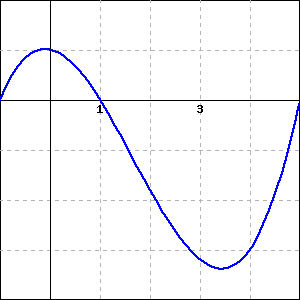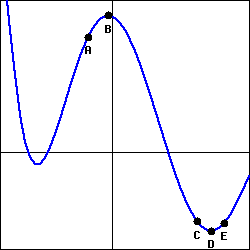Consider the function \(f(x)=x^5-3x^4+x\text{.}\) Find the \(5^{th}\) derivative.
To find the \(5^{th}\) derivative we will take the derivative \(5\) times.
The first derivative is:
\begin{equation*}
f'(x)=\frac{df}{dx}=5x^4-12x^3+1.
\end{equation*}
The second derivative is:
\begin{equation*}
f''(x)=\frac{d^2f}{dx^2}=20x^3-36x^2.
\end{equation*}
The third derivative is:
\begin{equation*}
f'''(x)=\frac{d^3f}{dx^3}=60x^2-72x.
\end{equation*}
The fourth derivative is:
\begin{equation*}
f^{(4)}(x)=\frac{d^4f}{dx^4}=120x-72.
\end{equation*}
The fifth derivative is:
\begin{equation*}
f^{(5)}(x)=\frac{d^5f}{dx^5}=120.
\end{equation*}




